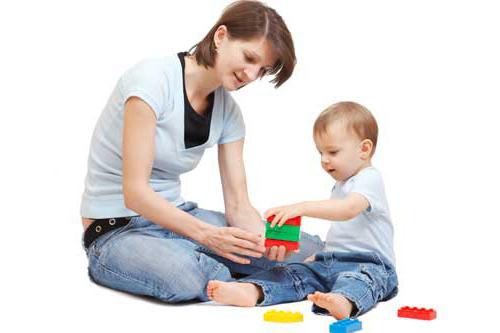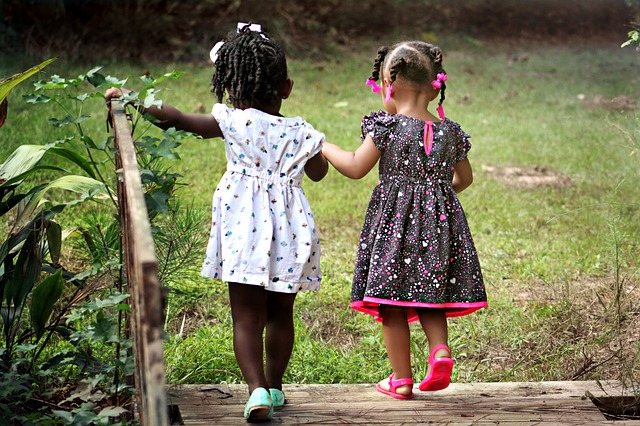Regimen for a child aged from one year to one and a half years The daily regimen of a child aged from 1 year to 1 year 6 months should ensure sufficient duration of sleep during the day, intervals between meals and periods of wakefulness, the duration corresponding to the needs of the body of a child of this age. In addition to its enormous importance for the baby’s health, a correct, strictly followed regime is also important because it fosters discipline and eliminates the basis for a number of clashes between adults and the child.
When establishing a child’s daily routine, it is necessary to take into account his or her existing habits and needs. For example, it is more advisable to feed a baby under the age of one and a half years after sleep, then he will eat better. A well-rested and fed child is cheerful, cheerful and plays well. Having played enough, he will quickly and soundly fall asleep. Thus, the sequence: sleep, feeding, play and sleep again before feeding is the most rational, and should be maintained until the child switches to a one-time daytime nap.
It is possible to maintain such a correct sequence and not violate the regime if the child quickly falls asleep and sleeps for the entire set time, i.e., right up to feeding. If the child does not fall asleep for a long time and falls asleep only when it is time to feed, then, awakened by hunger and not getting enough sleep, he will become capricious while eating and the whole regime will be disrupted.
In order for the child to quickly fall asleep and sleep soundly, you should take him out into the fresh air during sleep and return from a walk to the time of feeding.
A one-year-old child can stay awake for 3 to 3.5 hours at a time. The period of wakefulness lengthens with age, and by the age of one and a half years the child may no longer sleep for 5 hours in a row.
From a year to a year and a half, the child’s routine is approximately the same as at 10 months, i.e.: at 8 o’clock. - breakfast, at 12 - lunch, at 16 o'clock. 30 min. - afternoon tea, 7 p.m. 30 min. - dinner; from 10 o'clock morning until 12 o'clock. day - first daytime nap, from 15 o'clock. until 16 o'clock 30 min. - second. Thus, at this age, children sleep 2 times during the day and eat 4-5 times. Night sleep should begin at 20 o'clock.
Weakened after illness or premature babies should sleep twice during the day until 1 year 8 months.
After a year, the child is usually no longer breastfed. If he turns one year old in the spring or summer, then he should not be weaned until the fall.
Some parents transfer their child to a one-time nap at the age of one, and not from one and a half years. At the same time, the child, although he sleeps once, sleeps for a long time - 3 hours in a row. This mode, of course, is convenient for adults, as it leaves more free time for homework. However, this is harmful for the child, because in this case he usually sleeps during the day from 10-11 o'clock. until 13-14 hours, and night sleep begins at 20-21 hours. Thus, between daytime and night sleep, the child is awake for 6-7 hours, which is tiring for him. In addition, in the evening, all the adults return from work, they talk and play with the baby, he becomes overexcited, and this has a very adverse effect on his nervous system.
When transferring a child to a one-time nap, parents often explain this by saying that the second time he falls asleep poorly and, obviously, a second nap is unnecessary for him. In reality, this is far from the case: it is nervous, excitable children, overloaded with impressions, who especially need a second sleep, who fall asleep poorly. Therefore, in order for them to quickly fall asleep, the necessary conditions should be created.
Doctors note that more often those parents who switched their children to a one-time nap schedule too early come to the consultation with complaints about “whims”, unbalanced behavior, and inexplicable crying of children.
++++++++++++++++++++++++++++++++++++++++++++++++++++++++++++++++
Daily routine for a child from 1 to 1.5 years old
A child up to one and a half years old will be less sick and tired if you choose the right daily routine for him and follow it. This regime is the basis for healthy child rearing. During this age period, the child’s nervous system is very unstable, so he needs to be given as much attention as possible. It is important for parents to know that a one-and-a-half-year-old and three-year-old child should live according to different sleep and activity patterns. During this period, you need to practice three different daily routines. We present the daily routine for a one- to one-and-a-half-year-old child.
The best daily routine
It will be considered optimal if the child’s daily schedule is designed in such a way that it coincides with his natural needs. If the child sleeps during the day at 13.00, then it is best to plan naps during the day at this time. If you suddenly change a child’s habits, his nervous system will suffer, and this daily routine will not bring any benefit. Therefore, the daily routine for a child aged 1-1.5 years should be as gentle as possible. Parents can judge the success of their regime by the child's good mood and good health.
The best daily routine is the one that accustoms the child to order and organizes his leisure time. Then it will be much easier for the child to get used to kindergarten and school.
Benefits and pleasure from the general daily routine of mother and baby

A 2-year-old child’s daily routine will help the mother herself become calmer and more organized. Komarovsky, a pediatrician of the highest category, advises organizing the correct routine for the baby for the peace of mind of parents. And it's not a joke! Having accustomed the child to a certain sequence of actions during the day, the mother will always know in advance what she needs to do. The baby will behave calmer and will not argue with his parents and be capricious for no reason. A daily routine is useful for every family. Try to live “according to plan” - and you will understand how convenient it is!
If you don't follow a daily routine
If parents are illogical in observing the children’s daily routine, then they force the child to follow it, then they let everything take its course, this negatively affects the baby’s nervous system. He may have the following health problems.
- Moodiness, irritability, nervousness
- Fast fatiguability
- Changes in activity and rest
- Mood swings
- Lack of sleep, poor sleep
- Poor appetite
- Insufficient assimilation of information
- Reluctance to clean up after yourself or help your mother
Age characteristics of a child 1-1.5 years old
When a child turns one year old, he begins to develop more rapidly than before. And at the same time, a child at this age still has many inconsistencies. Physically, the child is not yet able to withstand the whole day without sleep; he gets tired quickly. At the same time, the child loves to run and jump a lot and actively, however, he gets tired very soon and needs rest. The child’s coordination of movements is still insufficient, despite the fact that he wants to play for a long time and a lot.
A child at this age can fulfill an adult’s request to bring or serve something, and his active vocabulary begins to quickly expand. A child at this age throws away the pacifier and begins to eat with a spoon. True, it sheds a lot at the same time.
Sleep of a child 1-1.5 years old
Daytime naps should be scheduled twice in the schedule of a child of this age. The first time the child should sleep from two to 2.5 hours, and the second time - up to two hours.
In order for the child to fall asleep normally, you need to stop active games half an hour before. It is ideal if the child takes a walk with his mother in the fresh air an hour before bedtime. This way his nervous system will calm down, blood flow will be activated, and the blood will be more saturated with oxygen. It is very important that every day the sleep schedule, as well as other activities of the child, is planned at the same time. This way the child will develop habits and conditioned reflexes that will allow him to follow the schedule in the future and not disrupt his sleep and activity patterns.
When you teach your child to go to bed at the same time, you need to wake him up at the same time. True, it is permissible to “overstay” the baby for 15 minutes or wake him up a quarter of an hour earlier, if this is convenient for the child. After sleep, you need to start teaching your child to dress himself, helping him and showing him how to do it. At the same time, you need to show the baby the clothes and name them.
Sleeping in the fresh air is good in summer. In the cold season, before putting a 1-1.5 year old child to bed, you need to thoroughly ventilate the room. But the baby should not sleep in a draft - he will get sick.
Why is this necessary?
Of course, not all mothers need a clear regimen. I think it might even be easier to live with one child without any plan. Just look at the baby’s mood, navigate the situation... Much depends on the mother’s character, her love for stability or spontaneity.
But when a woman has two or more children, and each lives in their own way... A well-designed daily routine can significantly make mother’s everyday life easier! Definitely not always. But often!
If you have small children, your schedule will be very flexible. No one can force a baby to sleep from 11 to 12 o'clock. Or eat within 20 minutes. Some unplanned incidents always happen to toddlers.
You can even have multiple mode options. For example, the first - if the child falls asleep from 12 to 14. The second - if from 14 to 16. And the third - if he refuses to sleep at all during the day.
Your day may depend on the weather outside, your baby’s mood, and of course, your planned trips.

Benefits of the daily routine:
- You think in advance about how to fit all the necessary activities into your regular day. And find the most optimal way.
- You know exactly when you will have time for each of your children, for household chores and for yourself. And if the schedule is adequate enough, you will have time to do everything.
- Having a routine will keep you from getting too caught up in cleaning or working with one of the kids at the expense of everything else.
- Many women feel calmer when they have everything planned out.
- Often children get used to the routine, it is easier for them to go to bed at the same time, it is easier for them to come to terms with their mother’s affairs when they are always at the same time... And the kids will know that you will definitely play with them. At the certain time.
- In my opinion, the habit of living according to a routine is a good habit. And the easiest way to develop it is from childhood.

How many times should I feed a child aged 1-1.5 years?
Feeding should not be less than four times a day. Approximately 3-4 hours should pass between feedings. After feeding, the baby should take a walk. And then you can get some sleep, and after sleep the baby is fed again. With this daily routine, the child grows and develops well. After sleeping and eating, the child is calm, plays well, is not capricious, his nervous system is calmer than those of those children who do not get enough sleep and are malnourished.
When you spoon feed your baby and teach him to use this device on his own, you can use a little trick. If a child cannot eat from a spoon, you need to put thick food into it first, and then, when everything starts to work out, you can scoop out liquids with a spoon: soup, jelly. There is no need to overexert the child: let him learn just a little, 3-4 spoons are enough, and then dad or mom will feed the baby. At the end of feeding, you can use a bonus for the baby - allow him to finish himself with a spoon when there is very little food left.
How much does a 2 year old child eat?
From the very beginning, you should be very careful about your diet. At 2 years old, a child can already eat harder foods along with purees. Since children in infancy primarily adopt the habits and tastes of their parents, it is worth reviewing the family menu, taking into account what is most appropriate for the child. In a healthy family, children will be healthy.
The choice of basic products should be approached from the point of view of their benefits for the development of the baby. Vegetables and fruits at least 5 times a day in the form of porridge, puree or just fresh fruit. At such an early age, the child’s stomach is still very small and therefore it is important that every spoonful of food is as effective and nutritious as possible.
Feeding a child should consist of three main feedings (breakfast, lunch and dinner) and several snacks (second breakfast, afternoon snack and, possibly, second dinner). Each parent sets meal times according to the baby’s daily routine.
You can formulate a diet based on:
- dairy products. At such an early age, in addition to breast milk, the baby is well absorbed by various milk formulas, and it is better to postpone acquaintance with whole cow's milk until later years;
- fish and meat. In addition to the benefits and variety in the diet, these products also contribute to the development of chewing skills in a 2-year-old child;
- soups To begin with, you should refrain from meat broths, limiting your diet only to vegetable soups. At the same time, the baby begins to learn how to handle a spoon on his own, and daily feeding can also become an exciting game for him.
The approach may be different if based on the basic microelements necessary for a growing body:
- Vitamin A is responsible for tissue growth, and zinc, which promotes its absorption, also strengthens the immune system (liver, egg yolk, cream).
- Vitamin C - promotes the development of bone and connective tissue. It is a must in the diet, since ascorbic acid is not formed in the human body (fresh fruits, vegetables, herbs).
- Vitamin E, which is an active antioxidant and promotes better absorption of vitamin A (vegetable oils, cereals, legumes, Brussels sprouts and broccoli).
- Vitamin D, which promotes the absorption of calcium and magnesium, which play an important role in the formation of bone tissue. However, its level must be strictly regulated, otherwise it will interfere with the absorption of iron necessary for healthy blood. Vitamin D is found in fish, liver, chicken eggs, dairy products, and greens.
Activity of a child 1-1.5 years old throughout the day
As we have already figured out, the baby sleeps for about 4-4.5 hours during the day. The same amount of time is spent on the period of activity. Changing the daily routine, that is, reducing the period of sleep or period of activity, should not be done, because this may have an undesirable effect on the child’s health. The child may suffer from increased fatigue or, conversely, lethargy.
To make the child’s activity more varied throughout the day, it is necessary to include bathing and educational games in the daily routine. Books, bright toys, pyramids, cubes are a very good way to diversify the waking period of a child aged 1-1.5 years.
Daily routine at 2.5 years old?
You should always adhere to the rule that children's sleep is healthy only if absolutely all family members get enough sleep. In this case, there is no problem that the child falls asleep only at 12 o’clock at night, provided that the others are also still minding their own business and go to bed even later. If you want to go to bed earlier, then this problem must be solved. All it takes is desire, persistence and some time. At the same time, we must remember that sleep is closely related to the main components of lifestyle - nutrition, walks, air parameters, clothing, hygiene procedures, etc.
You also need to understand that the family is complete, happy and productive when the parents have the opportunity to sleep 8 hours a day. More than anything else - more food and drink, more sleep and fresh air - a child needs a healthy, rested and loving mother and father.
Next, you need to address your sleep schedule. From the very moment of birth, the child's regime, like many things, must be subordinated to the family regime. And nothing else. You need to prepare for bedtime in advance and prepare your child for it too. First of all, you should decide on a time when the whole family should fall asleep, and it should be a time that is convenient for everyone. You can go to bed at 9 pm and get up at 5 am, or sleep from 11 pm to 7 am. The main thing is that its duration is about 8 hours. Once you have decided on this, you need to strictly follow it.
Next we need to determine who will sleep and where. The child should not spend the night with his parents. Almost from the first days it is necessary to put him in his own crib, up to a year it is permissible if it is in the bedroom with the parents, and then the child must be moved to his own room, if the living space allows.
A separate topic is daytime sleep. In order for your child to sleep well at night, daytime sleep should not exceed the established limits. The average daily need for sleep in children is as follows: up to 3 months - 16-20 hours; 6 months - 14.5 hours; 12 months - 13.5 hours; 2 years - 13 hours; 4 years - 11.5 hours; 6 years - 9.5 hours; 12 years - 8.5 hours. Therefore, you need to wake up your child when the daytime sleep limit has been reached. At night you should sleep as much as you should, but daytime sleep should be reduced.
Another rule for sound and healthy sleep is active physical activity during the day. You need to actively spend daylight hours: walk outside, play outdoor games with peers or parents, which will be useful for both the child and adults. Even before going to bed, it will be useful to take a walk, but now it’s calm.
By evening, it is generally necessary for the child to calm down emotionally. Only quiet games and reading good fairy tales are suitable for this. Watching cartoons is allowed, but they must be already familiar and, again, calm. A bedtime lullaby will also play a positive role - the child will calm down.
You also need to make sure that the nursery is cool; to do this, you must ventilate it before going to bed. It is necessary to constantly do wet cleaning. And we must not forget about the bed - it should be comfortable.
Bathing and hardening
Before afternoon tea you need to give your child a bath. If not bathing, then rubbing, it is also very useful for hardening. First they wipe the child's arms, then the chest, then the legs, then the back. The water temperature should be no higher than 35 degrees Celsius. To harden a baby under the age of one and a half years, you can gradually reduce the water temperature. Once a week or five days, when bathing and drying, reduce the water temperature by 5 degrees, resulting in a water temperature of 24 degrees. You should not give up hardening - it greatly strengthens the child’s nervous, immune and respiratory systems.
What should you teach a 1-1.5 year old child?
At this age, it is imperative to teach your child to wash his hands, brush his teeth, and use a spoon, napkin, and potty.
Daily routine for a child from 1 to 1.5 years old
| Kind of activity | Time |
| Feeding | 7.30, 12.00, 16.30, 20.00 |
| Wakefulness | 7.00 – 10.00, 12.00 – 15.30, 16.30 – 20.30 |
| Dream | First sleep – 10.00 – 12.00, second – 15.30 – 16.30, night sleep – 20.30 – 07.00 |
| Walk | after lunch and afternoon tea |
| Bathing | 19.00 |
How to create the right daily routine for your child
In order to create a daily routine for your child, you need to observe him for several days. You can even write down on a piece of paper the time at which he wakes up, at what time he wants to eat, and at what time he begins to yawn and prepare for daytime sleep. Based on this, you can create a picture of the day that is specific to your child and only slightly correct it.
After all, all children are different. Some people wake up at 7 am and are ready to fall asleep at 9 pm. Others sleep until 8-9 in the morning, respectively, and go to bed later in the evening. You should not rely on books that indicate how much sleep a child should sleep at a certain age. All children are different, just like adults, some like to sleep, others, on the contrary, are active. The same applies to food - one baby can withstand 4 hours without food, another after 2.5-3 hours is ready to have a snack.
What helped me in creating a daily routine was that every day at the same time we took walks and ate at a certain interval. And in the evening at the same time they began to put away the toys, swim and read a fairy tale. This is a sequence of actions that I could influence. And at this time, observing what time the kids express a desire to have a snack and sleep, I have already formed a daily routine, which we follow to this day.
So the child’s daily routine at home can be created in a way that will be comfortable for the child and mother. Don’t forget to listen to your baby and then everything will work out! Do you think a child needs a daily routine? Does your baby have a daily routine and if so, please write what it is, I’m very interested!











